In the 1970s, job seekers were advised to include personal details in their resumes – such as height, marital status, and age.
In the 1980s, candidates came to interviews with shoulder pads and studied up for typing tests.
In the 1990s, the internet job board was finally invented — though it took a while to catch on. Half of the job seekers in 1997 still found a job through newspaper ads.
The recruitment process has come a long way since then. And it is undergoing another fundamental shift today — thanks to advanced technologies like AI and Machine Learning. Companies are leveraging these techniques to eliminate manual work, gain insights into talent, and make better hires.
Whether your company has high-volume hiring needs or is trying to do more with less, here is everything you need to know about Machine Learning in recruitment. We’ll cover how the technology works and how to leverage it in each part of the hiring process, with real-world use cases plus the potential downside of relying on the technology too much
What is machine learning?
Machine Learning applies advanced optimization algorithms to produce state-of-the-art AI that solves complex real-world problems. The latest deep learning has demonstrated the capability to deliver AI that performs similarly or better than human experts.
Here’s why Machine Learning solutions are game changers in the recruiting process.
How does Machine Learning work?
Machine Learning works by ingesting large amounts of data, which it uses to identify patterns and relationships. The system then uses these patterns to make predictions or take actions that it wasn’t explicitly programmed to do (i.e., “learns”).
Today, Machine Learning often relies on Deep Learning techniques, or the creation of artificial neural networks, to model and solve complex problems. These networks are inspired by the structure and function of the human brain and contain more layering, complexity, and abstraction than older machine learning models.
source: Orhan G. Yalçin
There are three main types of Machine Learning. That includes:
- Supervised learning: The algorithm is trained on a labeled dataset, where the “correct” output is already known. For example, say that you want to teach a Machine Learning algorithm to recognize pictures of corgis. With supervised learning, you can show the ML pictures of corgis and non-corgis labeled as such. Over time, the ML will be able to recognize the pattern and predict whether a new picture is a corgi.
- Unsupervised learning: The system is provided with unlabeled data and must find patterns and relationships independently. Unsupervised learning can detect anomalies in financial data, such as fraud or market irregularities. It can also uncover groups or “clusters” within data. Marketers might use unsupervised learning to segment customers based on the types of products they buy or how frequently they purchase.
- Reinforcement learning: the system learns by interacting with an environment and receiving feedback through rewards or penalties. A real-world example is the self-driving car, which must decide how to navigate the road, avoid obstacles, and reach its destination. The driving system receives rewards for following the rules of the road, staying within its lane, and reaching its destination quickly and safely. Over time, it learns to make better decisions and improve its performance.
Now let’s get into the specifics of Machine Learning in recruitment.
1. Recruitment Marketing
Recruiters, who typically manage 40–60 requisitions at any time, can use tools like ChatGPT to help speed up the writing of job ads.
There’s also a lot of data that goes into predicting which ads perform well. For example, short job posts under 300 words perform 8.4% better than long ones. 70% of candidates apply on their phones.
Machine Learning can help uncover insights to help you answer questions like where to spend your advertising dollars, how to optimize the structure of your text to get the best results, and the best time of the day to post on job boards.
Use Case: Textio
Textio is our pick for the most up-to-date recruiting language optimization (and diversity boosting) tool currently on the market.
Textio’s recruiting product is fueled by a data set of 70 million+ real-world job listings and hiring outcomes from industries across the globe. It leverages AI and NLP to continually update and optimize the performance of job descriptions, ads, candidate communications, and other recruiting texts.
It also specializes in identifying and eliminating biased languaging, maximizing inclusivity for candidates of all demographics and all backgrounds.
More examples
- 2/1/23 — ChatGPT leverages AI/ML to write “ads, emails, paragraphs, whole blog posts, or even college papers”
- 11/17/21 — Grammarly raises $200 million to leverage NLP and “AI to generate and optimize ad copy” and other written texts
- 2/1/2023 — The chatbot Globes “found an idea for a startup, prepared a business plan, developed a product, drafted job ads…”
2. Candidate Sourcing
Particularly when it comes to in-demand tech talent, simply putting up job postings isn’t enough to generate the candidate volume you need. One central pain point Machine Learning can help with is candidate sourcing — where nearly half of recruiters say they spend most of their workweek.
To find candidates, human recruiters need to determine the following:
- Is this candidate’s background strong enough to meet our bar but not so strong that we have no chance of recruiting them?
- Does this candidate have the right skills? If they don’t list the right skills, can I infer that they do?
- Has the candidate previously solved problems similar to those they’ll face in this role?
Finding these answers takes expertise, experience, and time — particularly as roles become more technical and specialized. As a result, finding suitable candidates is challenging to scale.
Use case: Celential.ai
Celential.ai solves this problem through artificial intelligence and state-of-the-art deep learning models.
To break it down simply:
Celential built a talent graph of 15+ million tech talent across the US, Canada, Latin America, and India.
Graph Neural Networks, complex Machine Learning methods which mimic the structure and function of the human brain, allow Celential’s AI to make complex inferences. It can determine which skills a potential tech candidate possesses, even if they don’t list them publicly. The AI considers the tech stack of the companies they’ve worked for, skills listed on their coworkers’ profiles, JDs for the positions they’ve occupied, and more.
Celential.ai has even taught domain knowledge to its machine learning AI. For example, if a candidate has PyTorch, the AI infers whether the candidate uses it for systems-level engineering versus data science modeling.
As a result, with just a job description to get started, Celential will source and contact top-fit candidates for your roles. Warm candidates will start appearing in just 1-5 days, with no work on your part.
And the insights generated by its AI can tell you predicted skills, career trajectory, level, domain experience, and selectivity — the exact information you need to make a hire.
More examples
- 7/7/2022 — Beamery’s “AI-based tool conducts unbiased talent searches, considering each individual’s potential and skill set”
- 7/7/2022 — ARYA by Leoforce “identifies quality talent for recruiters through data, behavioral patterns, and machine learning”
- 8/12/22 — impress.ai’s “AI-powered platform helps companies identify talent with the most appropriate skills, cutting the time to shortlist by 90%”
3. Personalized Candidate Outreach
Sourcing great candidates and messaging candidates isn’t easy, and that’s only half the battle — how do you convince them to reply?
With tech talent receiving hundreds of messages daily, personalization is the key to cutting through the noise.
Yet while personalized messaging can significantly increase your reply rate, it is tough for busy founders and hiring teams to achieve at scale — unless AI and machine learning can do it for them.
Use case: Celential.ai
The key to Celential.ai’s personalized candidate outreach is the data in its tech talent graph of 15+ million profiles enriched by Machine Learning. The AI platform leverages this data to generate unique, highly personalized messages to pitch roles to candidates.
Once a candidate replies, Celential uses Natural Language Processing to analyze a candidate’s reply, determine the best response, and then create it. It uses sentiment analysis to scan for indications of positivity within a message, then hones in on a number of common recruiting scenarios.
Once the Machine Learning system understands the scenario, it crafts an appropriate response or notifies human recruiters that there is an opportunity to engage with the candidate personally. This frees up time for recruiting teams that would normally be spent reading emails, following up on messages, and answering common queries.
More examples
- 2/29/2022 — At Jobvite, “AI is being used to automatically send outreach messages to candidates in a company’s database.”
- 7/7/2022 — Bullhorn “integrates AI into its talent platform, allowing recruiters to reach out to candidates with automated messages”
4. Resume Screening
Early resume screeners got a bad rap for screening out highly qualified candidates, being vulnerable to simple hacks, and failing to read formats outside of the word document.
Those of us who have ever looked for a job are likely familiar with the pain of uploading your resume… than painstakingly typing out the same information info into an employer’s 15-page online form.
However, resume screening technology has come a long way over the past few years and is now indispensable to an efficient talent acquisition process. This is also good news for recruiters, who spend 23 hours on average reading resumes for every hire they make.
Use case: Hiration
Hiration provides a two-in-one complementary solution for job seekers and employers.
Its Machine Learning and NLP-powered tools help candidates quickly build the perfect resume and present themselves in the best light to companies. They also help optimize resumes to pass through employers’ AI recruitment tools and ATS.
Machine Learning algorithms are then used to match candidates with job descriptions predicted to have the best chance of success.
“Making sense of data at this scale has only become possible with the recent advancements in natural language processing and deep learning,” said CEO Aditya Sharma. “Using OpenAI’s GPT-3 and other in-house machine learning models, we’ve developed a career assistant that guides job seekers in real-time, while they are crafting their resume or preparing for their interview.”
For their part, employers use Hiration in the recruitment process to source, shortlist, and screen candidates. And as the company continues to input data on employees and employers, Hiration’s mutual-fit matching algorithms continue to improve.
More examples
- 12/20/22 — SmartRecruiters “uses AI to screen resumes and past candidates to identify top candidates”
- 1/31/2023 — ChatGPT can “assist with resume screening, candidate questions, and scheduling interviews”
5. Candidate Engagement
Chatboxes, AI assistants, and automated messaging systems can leverage Machine Learning to replace the conversations and scheduling normally done by administrative assistants and coordinators:
- Replying to Candidates: Machine learning algorithms can determine whether candidates are interested, not interested, or requesting more information and shoot back a reply at any hour of the day.
- Scheduling Interviews: The task of comparing calendars, emailing back and forth, and reminding candidates to show up can now all be performed by AI.
- Extending offers: Machine Learning can help determine appropriate salaries based on market data, generate offer letters, and manage to onboard.
Use Case: Paradox.ai
“Say hello to your next best hire,” proclaims Paradox.ai.
According to the company, that’s Olivia, an AI assistant hireable by the hour. Olivia can automate, answer, screen, schedule, and onboard candidates for companies.
Paradox.ai’s NLP algorithms were programmed to create a more human touch and improve the candidate experience. Its AI chat box technology ingests data and uses pattern matching to understand speech and pick up signals about mood and personality. Candidates interact with Olivia as they would with a recruiter or hiring manager, answering questions such as how many years to experience they possess.
Paradox.ai recently acquired Israeli AI chatbox startup spetz.io to further enhance the development of its AI and Machine Learning technologies.
More examples
- 1/27/23 — Humanly, XOR, Eightfold, Brazen, HireVue, Symphony Talent, Ideal, CEIPAL, iCIMS, and Sense included in a study released on recruitment chatboxes, or “program that simulates and processes human conversation, either written or spoken format with the help of artificial intelligence and machine learning”
6. Candidate assessment
One of the most frequently underestimated costs in the recruitment process is the time spent not just by recruiters but by hiring managers and their teams. This is particularly true for engineering roles — a big chunk of the total cost to hire a software developer goes to the hours that highly-paid software engineers sink into conducting coding exams to assess candidates.
Given a role, targeted skills, and seniority level, Machine Learning can help generate evaluations for technical expertise, cognitive ability, cultural fit, domain knowledge, and language proficiency.
As Machine Learning technology grows ever more advanced, behavior analytics techniques, Computer Vision, and Natural Language Processing can even help measure soft skills, culture fit, and communication ability through video interviews.
Use Case: HackerRank
HackerRank has evaluated over 40% of the world’s entire developer population, and all that data went into creating its AI tools for evaluating and hiring candidates.
These tools can score and rank candidates, offer test feedback, and perform more granular skill assessments for companies who need detailed information on candidates’ specific competencies.
To create an assessment score, HackerRank’s Machine Learning model considers factors such as how long developers spent on the test, the coding language they used, and how often they had to run a piece of code.
Its Tech Talent Matrix also helps companies put assessment scores into context and benchmark against peers — providing valuable insights for employers.
More examples
- 11/14/2020 — HireVue has a “proprietary algorithm to determine which candidates are ideal for a specific job by analyzing their vocabulary, speech patterns, body language, tone, and facial expressions”
- 4/28/2022 — MyInterview evaluates candidates with an “ML-trained database of tens of thousands of interviews, with each interview rated by a team of four different behavioral psychologists based on specific criteria”
Pitfalls of Machine Learning in Recruitment
Machine Learning insights can be extremely valuable to companies. However, mistakes can cost you time, qualified candidates, and reputation.
As AI, Blockchain, the Internet of Things, Robotic Process Automation, and Virtual Reality continue to transform the recruiting industry, here are some common pitfalls to watch out for.
Algorithm bias in the recruitment process
In 2018, Amazon discovered a big problem: it’s Artificial Intelligence recruiting tool did not like women.
The experimental hiring tool used Machine Learning to automatically rate each applicant with up to five stars — much like customers rate products while shopping at Amazon.
The problem was that the AI system was trained on resumes submitted to Amazon over the past 10 years, which were overwhelmingly from men. This caused the AI to downrate resumes containing words such as “women” or “female” and to prioritize male candidates.
While Amazon has since discontinued the problematic tool in its recruitment process, there are many other examples of AI systems that display bias against different ethnic groups, non-English-language speakers, and people with disabilities.
Companies can prevent algorithm bias with the following:
- Diversity training data, including resumes and profiles from individuals of different gender, ethnicity, and educational backgrounds
- Fairness constraints and human oversight to prevent the algorithms from making biased decisions based on protected characteristics
- Regular auditing and testing to continually monitor and improve decision-making
- Transparency so that biases can be identified and addressed.
Lack of personal connection in the hiring process
Automation not performed with care (such as in outreach messages, scheduling chatboxes, or employment assessments) can feel annoying, impersonal, and robotic — precisely the opposite effect as desired.
Candidates want to feel valued and unique — they don’t want to feel like interchangeable widgets on the factory line.
When done well, AI can team up with humans by eliminating the repetitive, manual tasks in the recruitment process — freeing up recruiters to build strong relationships with candidates
Gaming the system
There are many ways in which candidates can optimize their resumes for more points in an automated hiring system — such as by adding keywords from a job description.
In extreme cases, some candidates have turned to hacks such as adding keywords or even the whole JD to their resume in white-colored or tiny text — able to be picked up by the tool but not the human eye.
Some hiring tools have been trained to spot these hacks, but clever candidates sometimes will just outwit the machine.
No bandwidth to learn a new artificial intelligence tool
Tool fatigue is real. Companies purchase shiny (and pricey) new software, licenses go unused, and employees waste time jumping from tool to tool.
If that sounds familiar, Celential.ai offers an AI-driven Virtual Recruiter service that sources, vets, and engages top-notch, diverse candidates for technical and sales roles.
We deliver ready-to-interview candidates to customers directly. No learning curve or tools to learn. Just results!
Schedule a call with one of our product experts to find out how to get talent for up to 50% less cost.
Table of Contents







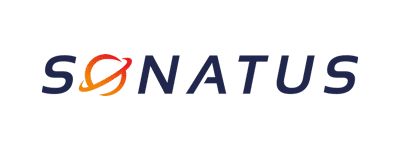







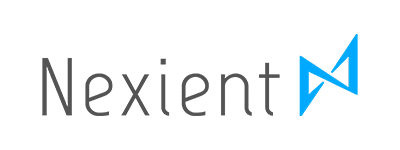

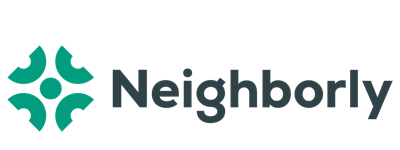



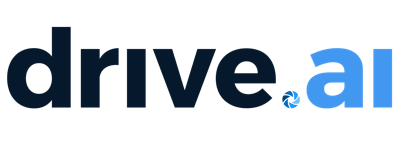



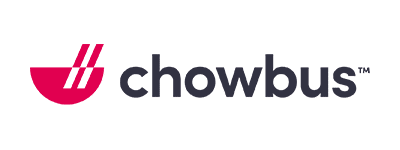
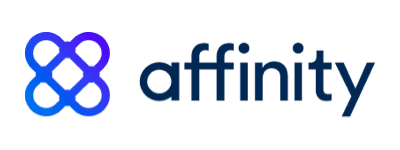



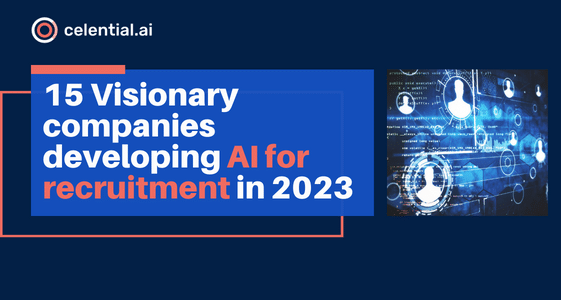

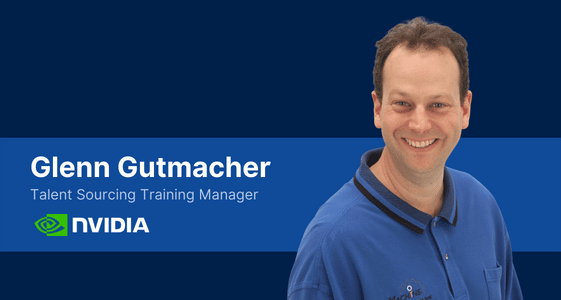
Submit a Comment